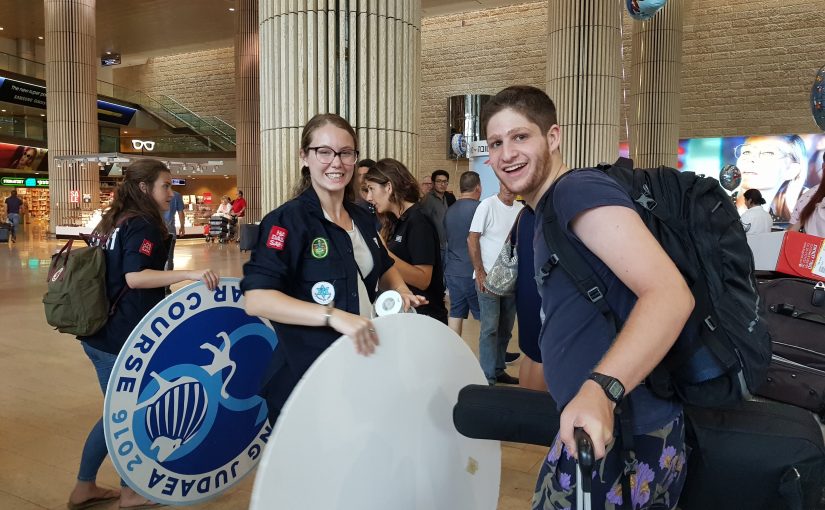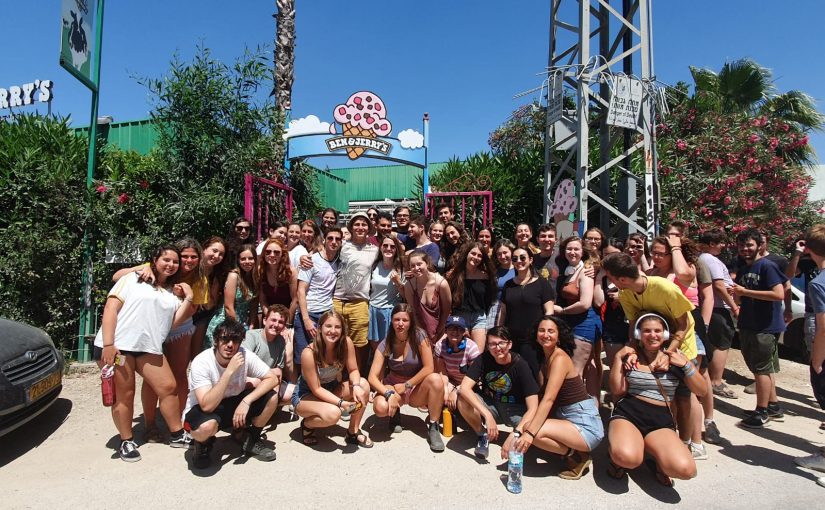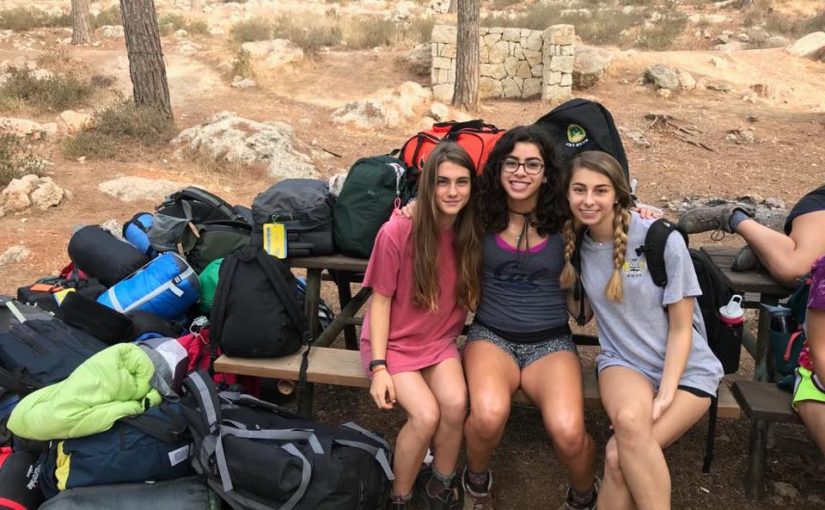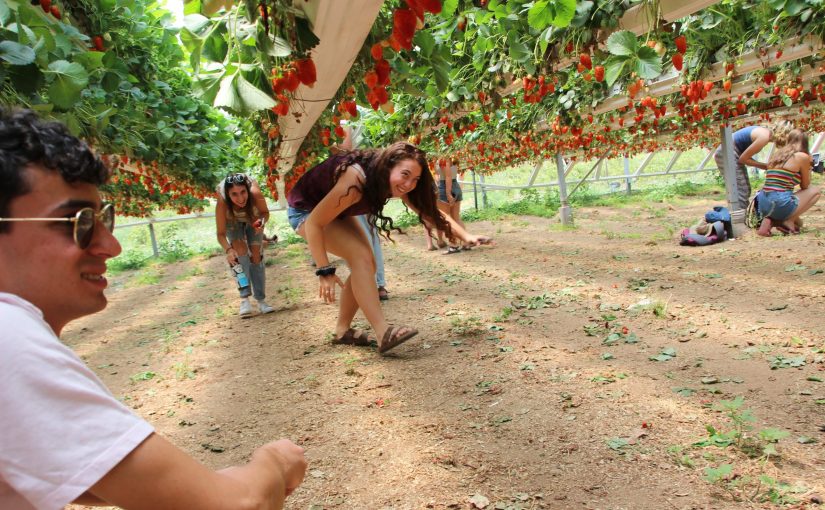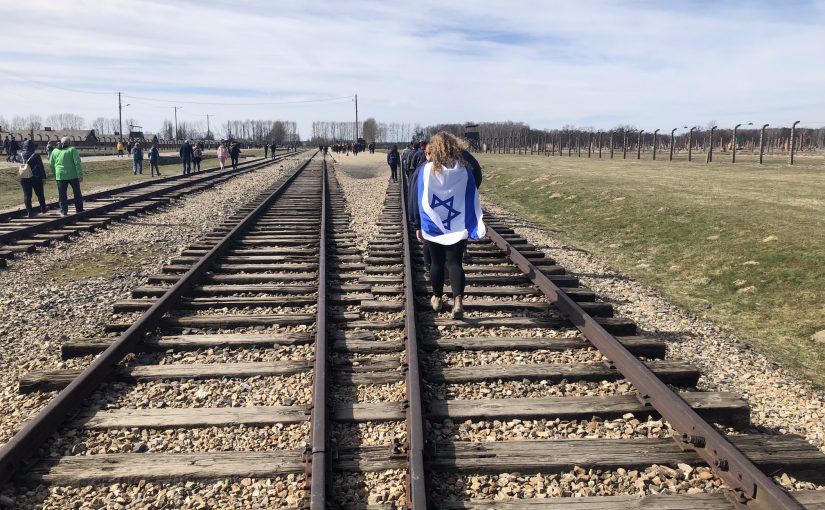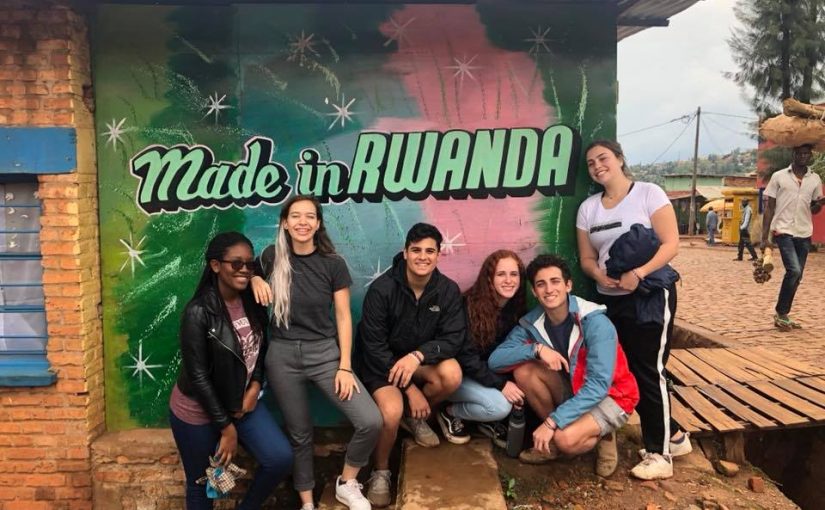Author: Year Course in Israel
The Unexpected Journey
When the End is a Beginning
Special Interest Month: Road Trip Edition!
Special interest month is an incredible time on Year Course, and arguably one of the best experiences of the whole year. After eight months of volunteering and courses, of ulpan Hebrew classes, trips around Israel and the world, workshops, seminars, after learning to save lives with Magen David Adom, practicing army skills on Marva, and making the desert bloom at Kibbutz Ketura, after having fun and gaining 100 new friends, there’s only one thing left to do: enjoy Israel!
For one entire month, Year Coursers get to simply experience everything this incredible country has to offer them, whether it’s meaningful volunteer work, surfing the waves off Tel Aviv, hiking and camping from the Sea of Galilee to the Mediterannean, or exploring the desert near the Dead Sea.
This year we had an amazing addition to Special Interest Month: Rabbi Adam’s Road Trip. Year Coursers are currently spending one whole week with Rabbi Adam Drucker, Director of Jewish Life on Year Course, who hand-picked his favorite spots all around the country and is introducing Year Coursers to some of Israel’s best-kept secrets. We’re only a couple days in and can’t wait to see what the rest of the week has in store.
Rabbi Adam made aliyah from the UK nearly four years ago with his family, and in that time has built a wonderful collection of places to visit in Israel. Each spot gives chanichim (participants) a chance to explore, appreciate and engage with a different aspect of Israel – agriculture, Zionist history, nature, preservation projects, industry, and of course food!
Rabbi Adam’s Road Trip highlights include:
- Strawberry picking in Gedera
- Stalactite caves in the Judaean lowlands
- Chocolate and wine tasting at Tishbi Winery
- Atlit, where Jewish refugees were held by the British before Israel was founded
- Numerous parks and hikes
Learn more about Year Course in Israel
Year Course in Poland
Our meaningful and important trip to Poland got off to a great start. Getting the chance to visit some of the places we have learned about all our lives has been very impactful for all the chanichim.
We landed in Warsaw early in the morning and headed to the Museum of Polish Jewish History, where we learned all about the unique history of Jews in Poland. We then headed to several burial grounds, including the Warsaw Jewish Cemetery and the site of the Warsaw Ghetto uprising memorials. One highlight from the day was participating in a ceremony run by Mia Milewich, Talia Pomp, and Sophia Prieto in front of the Rappaport Memorial for the Warsaw Ghetto.
Our second day was a much more emotionally taxing day. After touring the small village of Tykocin, including the town synagogue, we walked through a forest nearby to a clearing where a mass grave lies. Each chanich received a slip of paper with the name of a Jew from Tykocin who is buried there. It was an eye-opening experience. Afterwards, we traveled all the way to the Treblinka death camp, a camp that was completely destroyed and is memorialized with a display of 17,000 stones with the engraved names of villages where Jews who were brought to the camp came from. The chanichim got a chance to find the names of villages they recognized, we lit a candle and said Mourner’s Kaddish and the Hatikva, and it was meaningful for all involved.
In Lublin on our third day, we got to explore some remnants of Jewish life, including a yeshiva and a synagogue that had existed in the Lublin Ghetto. We brought Jewish life back into the yeshiva, singing “המלאך הגואל” and breathing some Jewish spirit back into the room. Afterwards, we went to the Majdanek concentration camp and did a complete tour. We had a short ceremony after our tour run by David Matz, Zoe Winger and Tania Blanga that helped the chanichim contextualize what we had just seen.
Our fourth day led us to Lezajsk, where we learned about Rebbe Elimelech in his tomb, and celebrated his life afterwards at a small “tisch” with two types of kugel and soup. Our moods changed from joyous to thankful as we trekked through an alleyway to a barn where Jews were hidden by a righteous among the nations family. We learned about how gentiles risked their lives to save Jews, and we got to see the inside of the barn where the families were hidden. Our last stop of the day was to a mass grave where children were killed. We shared a meaningful moment as we heard stories of children in the Holocaust.
Year Course in Rwanda
In early February, nearly two dozen Year Course participants traveled on a three-week trip to Rwanda – learning about and experiencing the country through an unprecedented exchange with the students at The Agahozo Shalom Youth Village, founded in 2007 by Year Course alumnus Anne Heyman z”l who left behind an incredible legacy of partnership and community when she passed away in 2014. The village was modeled after the Israeli youth village Yemin-Orde, and was built in an effort to respond to the overwhelming number of orphans living in Rwanda as a result of the 1994 Rwandan Genocide.
The Year Course excursion to Rwanda is unique in its depth and implementation, serving as a learning and cultural exchange trip rather than a service tour. While there are certainly aspects of service and volunteering, the goal of the experience is to create an environment of growth and conversation not only for Year Coursers, but for students at ASYV as well. Thankfully, the village has grown far more self-sufficient since its founding. While the first Year Course visits centered around completing major projects in the village – painting murals, building water tanks, creating a new library – today’s Year Coursers spend more time bonding with their Rwandan counterparts, and perhaps as importantly, learning a different way to live. Coming to Rwanda, for many Year Coursers, is to confront for the first time in their lives a world completely unlike their own – a world that, though rich in culture and community, lacks many of the ‘comforts’ that Year Coursers may take for granted, both emotional and physical.
Jenn Greenspan and Noah Furman, two Year Coursers from Texas, knew they wanted to take part in the Rwanda trip when they first signed up for Year Course. The two are lifelong Judaeans, having attended CYJ-Texas and Camp Tel Yehudah before returning to CYJ-Texas as counselors, where this coming summer they will bring their Year Course experience home to camp after participating in the Camp Leadership Track.
From the beginning of Year Course in September until the trip in February, participants discuss and learn about the Rwandan Genocide in depth, as well as elaborate on Rwandan culture, history and traditions. Aside from better understanding the country and people they are going to visit, participants learn intensively about the genocide before going, because as Jenn and Noah describe, very little of the trip itself deals directly with the genocide – Rwandans are generally reluctant to talk about it. “When someone started to talk about the genocide, you’d hold your breath,” Jenn said. “I didn’t want to ask about it directly, so if someone decided to bring it up, I knew it was going to be important.”
